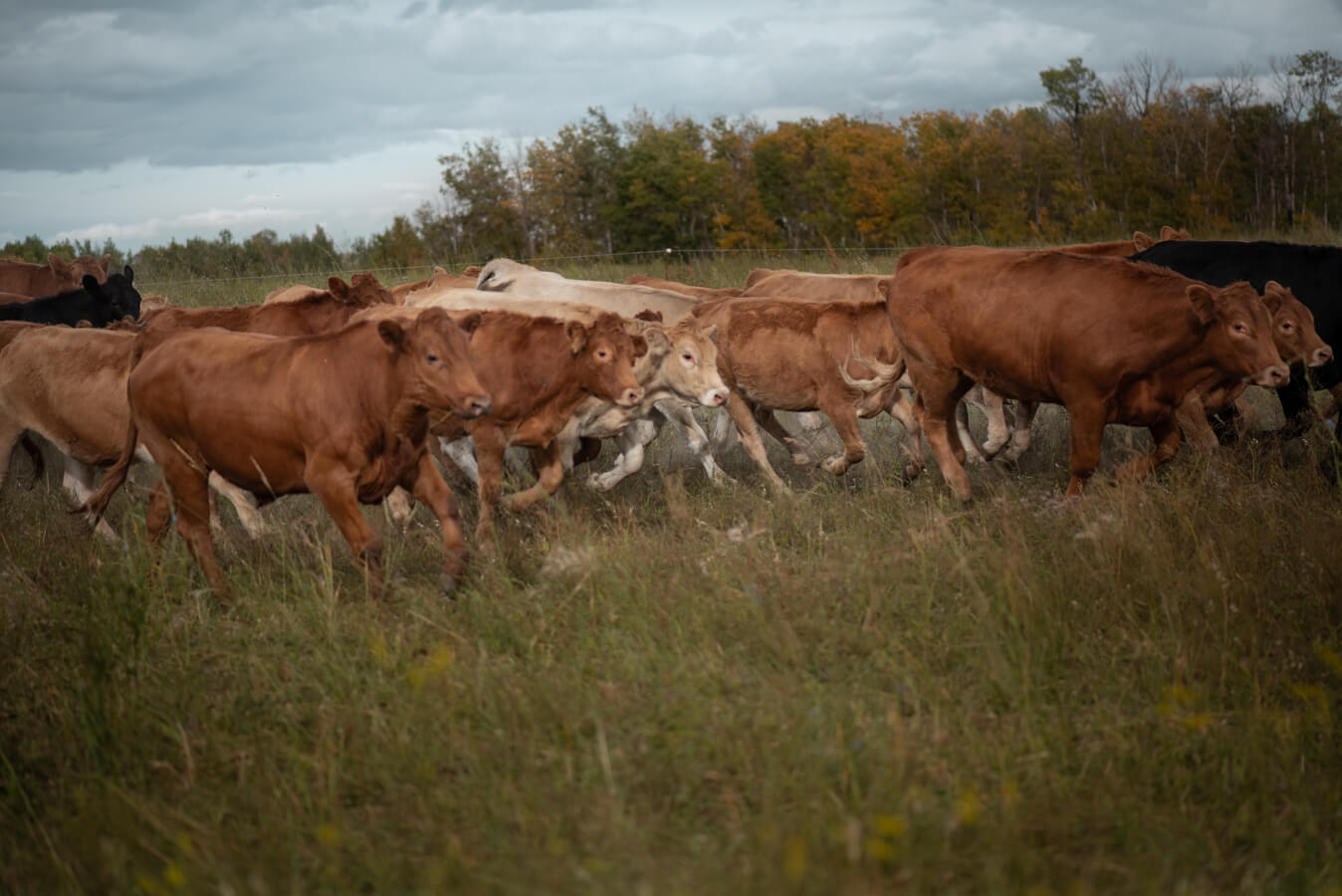In regenerative agriculture, animal welfare extends beyond the basics of low-stress handling and general care, but rather involves keeping livestock on the land whenever possible, requires careful timing, adapted infrastructure and the selection of breeds that will fit the environment. This symbiotic relationship between the land and animals produces happier and healthier animals, and more nutrient dense food.
Thoughtfully integrating livestock is a core principle of regenerative farming. When stewarded conscientiously, animals play a pivotal role in closing the nutrient loop and nurturing resilient ecosystems.
In this article, we explore how regenerative farms like Fromagerie La Station in Quebec and South Glanton Farms in Manitoba provide models for managed grazing, animal welfare, and farm diversification. Their approaches demonstrate how livestock can be a regenerative asset – sustaining animal welfare while nourishing the land.
Join us as we delve into the symbiotic relationship between ruminants and agroecosystems, and how farmers can leverage natural herd behaviours for soil regeneration and resilient food production.
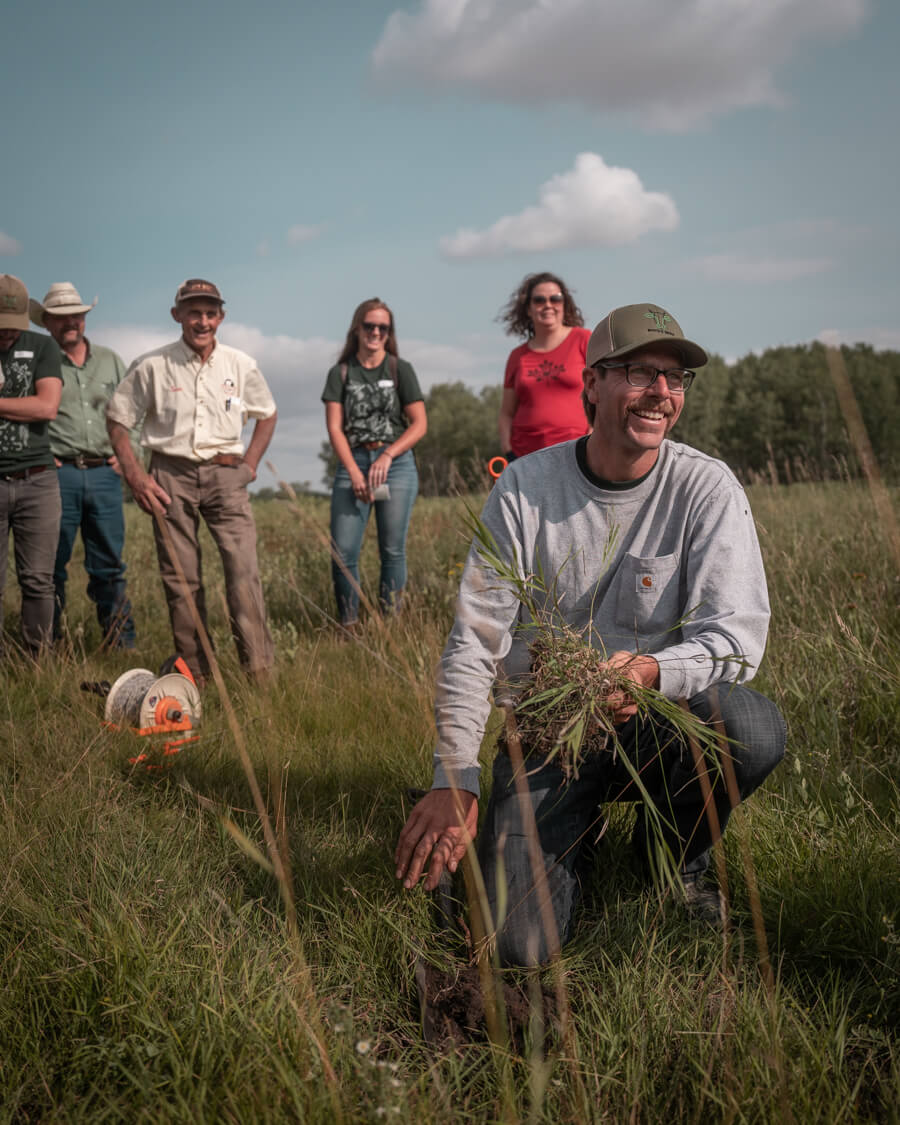
South Glanton Farms
Managed by Ryan Boyd, alongside his parents, wife, and their two young children, South Glanton Farms is a multi-generational mixed grain and livestock operation located north of Brandon, on the edge of the prairie pothole region. They raise predominantly black Angus cattle, and last season they calved around 400 cows. They use a variety of regenerative agriculture practices to promote animal welfare, including rotational grazing, low-stress handling, and careful selection of climate-adapted animals.
Ryan is particularly passionate about the cattle side of the farm and is always looking for new and innovative ways to manage his herd and improve their welfare. One of the things that Ryan and his family are most proud of is their grazing plan, which allows the cattle to graze outdoors for most of the year.
Being selected as a Nuffield Canada Scholar in 2019 (a prestigious, rural leadership program for influential agriculturalists) gave Ryan the mental boost he needed to go all-in on the innovative grazing management plan he had concocted to address the fluctuating profitability potential of his family farm.

What is a grazing management plan?
By creating a dynamic and adaptable grazing management plan, producers can ensure that both their livestock and pastures will thrive. Grazing management plans take into account the needs of the livestock, the condition of the pastures, and resources available to the land steward, such as time and labour, and access to water, fencing, and land.
Based on these factors, a rancher decides how often to move their livestock, how much land to allow per animal, the appropriate herd density in their given context, and how much time to allow between grazing events. In regenerative agriculture, these decisions are made with the goal of improving the state of the soil and environment in which a rancher works. Continuous monitoring and adaptability are key components of an effective grazing management plan.

La Ferme Pierre Bolduc, better known as Fromagerie La Station
Fromagerie La Station is a 1,050-acre organic dairy farm with 115 acres dedicated to pasture and grazing. Other areas of the land are used for hay and grain production, while others remain as forest. Located in the Coaticook River Valley in Quebec, a hot-spot for agri-tourism and gastronomy, the Bolduc farm is mostly run by their three sons, with Pierre and Carole Bolduc providing support. Their dairy cows have been happily pastured for four generations, and in that time, the farm has evolved to produce a bounty of organic agricultural products, including award-winning cheeses, maple syrup, and grain.
The farmers’ philosophy centers around increasing the appreciation of farmers, promoting human and animal well-being, and creating enduring value through regenerative practices. The cows are treated with the utmost care as the Bolducs dedicate special attention to their needs, providing them with diverse pastures and thoughtfully designed barns, as discussed further below.
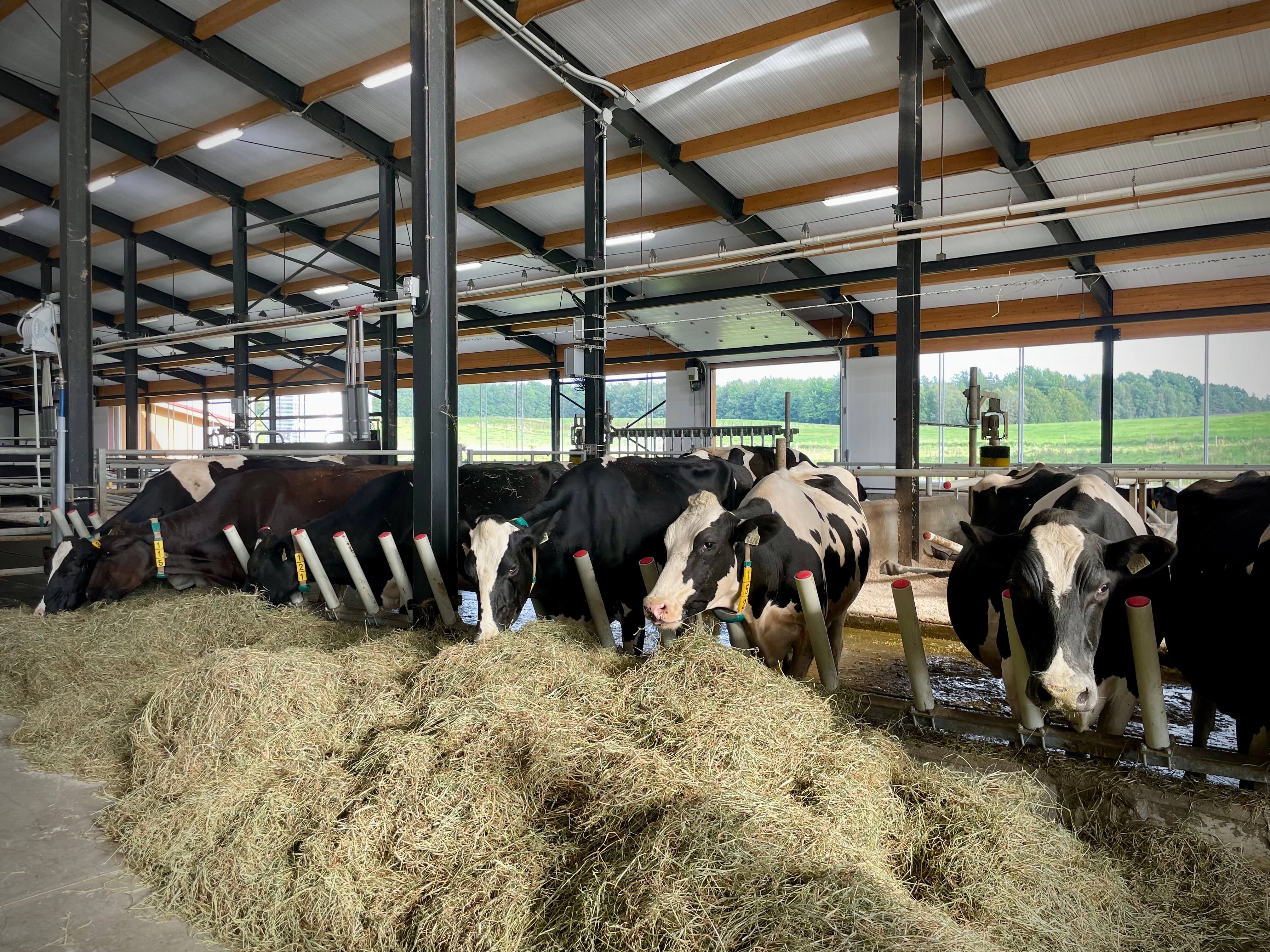
Animal Welfare in Regenerative Agriculture
At La Station, herd longevity, milk production, cleanliness, and relaxation are key indicators of cow well-being. The pastured cows have access to two freestall barns outfitted for their comfort, reducing the need for handling. Inside the barns, cows walk on cushioned rubber mats, enjoy a back scratch thanks to automated brushes, and benefit from an abundance of natural light. The farmers carefully monitor electromagnetic fields and remove parasitic currents from electrical systems, as cows are highly sensitive to frequencies and exposure to these can cause them stress. Great attention is also given to water quality. In the pastures, windbreak hedges provide the cows with shade and shelter. By conscientiously stewarding both the land and livestock, the farmers promote soil health, animal welfare, environmental stewardship and high-quality food.
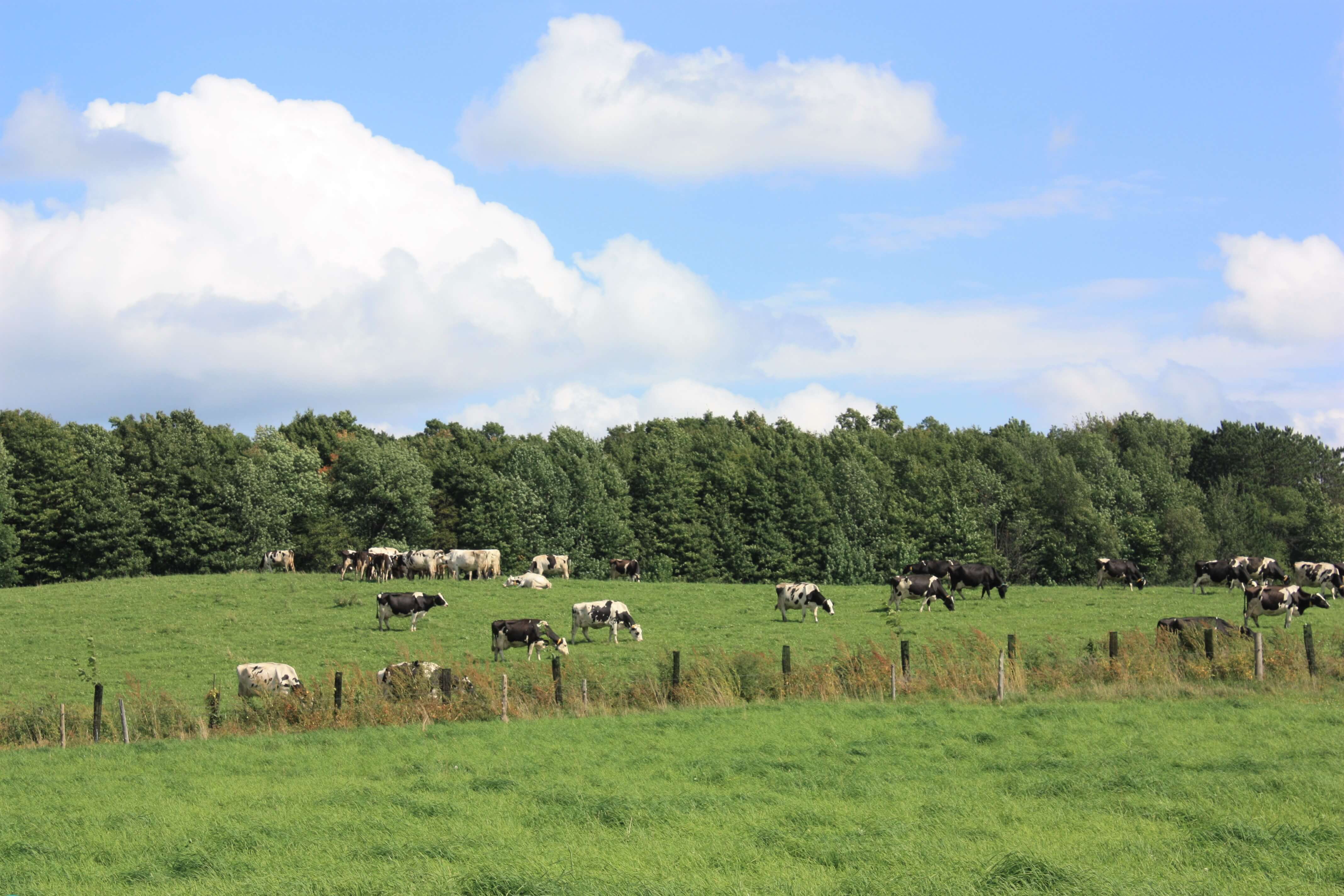
Managed Grazing
Managed grazing leverages livestock movement and impact to regenerate degraded soil. By mimicking patterns of wild herds, ruminants like cattle or sheep graze areas unfit for crops, recycling inedible plant biomass into organic nutrients. The act of grazing and resulting manure deposits foster plant growth, strengthen soil-plant symbiosis through root exudates, and ultimately build a more resilient ecosystem. This regenerative practice harnesses livestock’s innate behaviours, making them agents of soil health and holistic land renewal.
Whereas unmanaged animals can quickly destroy vegetation and compact the soil, managed grazing benefits the soil in several ways:
• Increasing drought-resilience and water holding capacity: Managed grazing stimulates deeper and more abundant root systems and creates channels for water to infiltrate, which improves the soil’s structure and increases resilience to drought and erosion. By preventing overgrazing, properly managed grazing systems also reduce compaction, further enhancing the soil’s ability to absorb and retain water.
• Boosting soil fertility: Grazing and trampling break down plant material, feeding the soil microbiology, thereby adding organic matter and enhancing fertility.
• Carbon sequestration: Well-managed grazing lands foster dense communities of plants and organisms, both above and below-ground, acting as an important carbon sink.
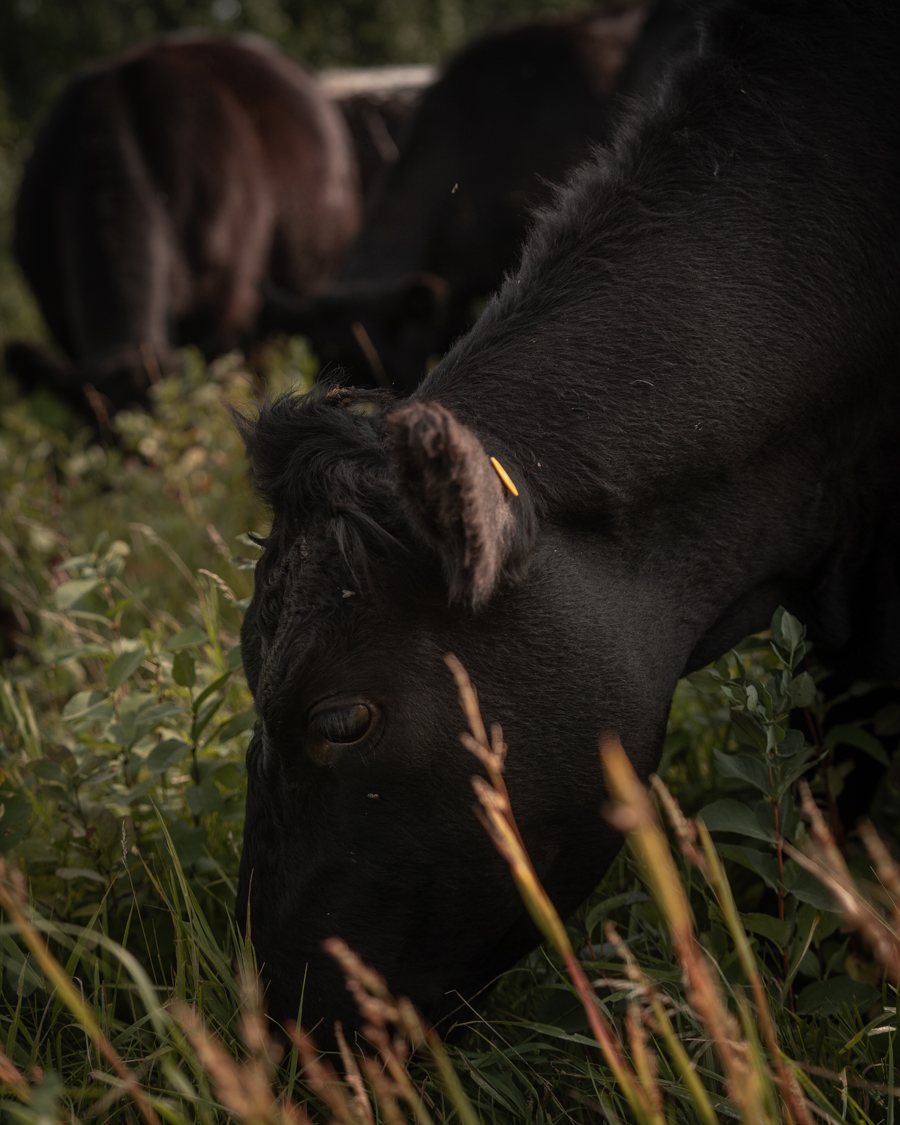
• Preventing erosion and agricultural runoff: Plant cover, coupled with a functional soil structure, enhances water infiltration, and resistance to physical disturbances. This also helps prevent erosion and runoff, helping to keep nutrients in the soil.
• Natural pest and weed control: Grazing animals can help manage weed, pest, and disease issues while breaking disease cycles, reducing reliance on synthetic fertilizers, herbicides, and fuel, further promoting soil health.
The Boyds’ cattle are managed in a way that helps to fertilize the soil and control weeds and pests. “We’ve been trying to build a grazing system that mimics nature, in that we’re calving in June on pasture, [and] keeping [them] on the land as much as possible throughout the year,” Ryan explains. Their “high-stock density rotational grazing” method involves keeping cows in dense groups on pasture, moving them up to four times daily depending on factors like the life stage of the herd, the weather, and the season. This approach leverages herd behaviour, making them less selective in their plant consumption to diversify their diet and control weed growth on the pastures.
Similarly, La Station’s dairy cows are pastured in a rotational grazing system. Frequent herd movement allows the grass to recover and the cows to have access to a diverse range of nutrients. This practice has had a noticeable impact on the taste of their products, as a diet primarily based on forages contributes to the production of superior cheeses. Therefore, the Bolducs also aim to produce the finest quality hay to meet the nutritional needs of the cattle when they’re not grazing.
Farm Diversification: A Path to Resilience
Strategically integrating livestock diversifies farm operations and spreads risk, countering market price fluctuations caused by various factors like weather events, global politics, and supply-demand dynamics.
For instance, low grain prices prompted Ryan Boyd to reevaluate cattle grazing practices, leading to high-stock density management and a direct-to-consumer marketing model. When a farmer has both cattle and grain, or any other form of farm diversification, they can be financially resilient and spread their assets across multiple markets.
La Station illustrates farm diversification by combining organic cheese, grain, hay, and maple syrup production. This diversity of products offers a stable livelihood while enriching the landscape. They extend diversification to direct-to-consumer marketing, reinforcing their resilience.
In both cases, one revenue stream can buoy the farm when another performs poorly.
Everyone has a role to play in transforming our food system. Whether it’s by visiting a farm or ranch to learn about where your food comes from, supporting local producers by shopping at farmers’ markets, encouraging your neighbourhood grocery store to stock local produce, or advocating for policy reforms, there are many ways we can all contribute to creating a more regenerative food system.
If you’re a gardener, you might source manure locally (or get backyard chickens!) to reap the benefits livestock manure has to offer your veggie garden. Supporting producers aligned with your values can inspire others to do the same. Regeneration Canada’s Farm Map helps you discover nearby regenerative farmers, their products, and the practices they employ.
To know more about regenerative practices at South Glanton Farms, check out the short film interview and podcast episode with Ryan Boyd. To know more about regenerative practices at La Station, watch the recording of the webinar “Regenerating the Planet” with Vincent Bolduc and the short film interview with the Bolduc family, and listen to the podcast episode with Vincent and Simon-Pierre.
Stay engaged with this enlightening journey by subscribing to our newsletter and following our social media channels. You’ll be the first to discover the compelling narratives of Canadian regenerative farmers from across the country. While you eagerly await the next blog post, scroll through our captivating Stories of Regeneration photo gallery, which offers a picturesque glimpse into our regenerative farm tours across Canada.
If you have any questions or comments about the topics covered in this blog post, please contact our Education & Research Manager at: paige@regenerationcanada.org. If you have questions specific to the Stories of Regeneration campaign, please connect with our Campaign Manager at: alieska@regenerationcanada.org.

